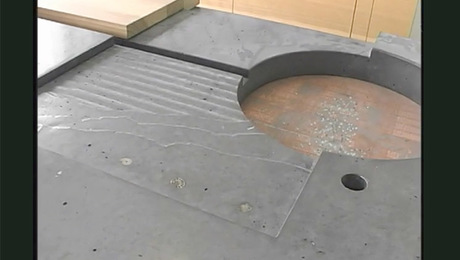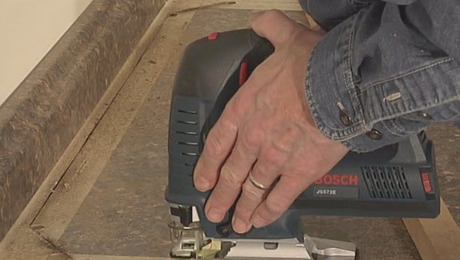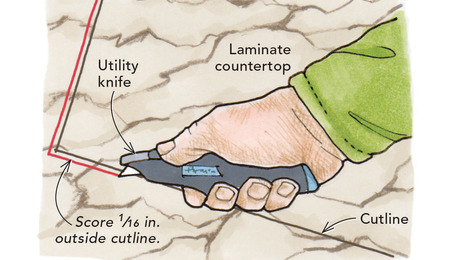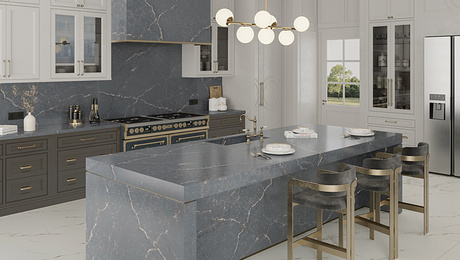Amazing Countertops
Manufacturers have improved old materials and developed new ones, expanding the potential for new and remodeled kitchens.
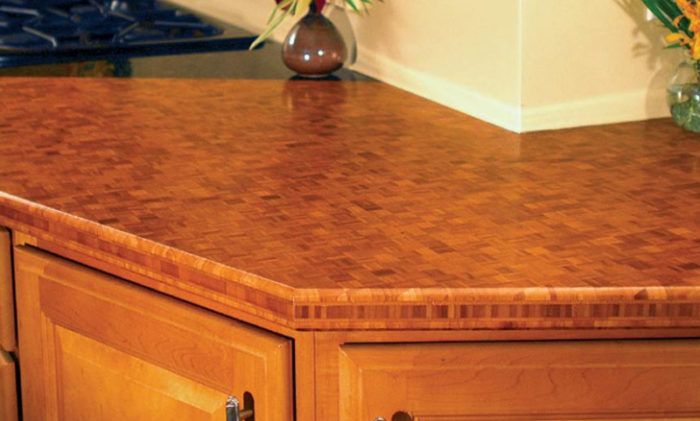
Magazine extra: Go inside the IceStone manufacturing facility at the former Brooklyn Navy Yard, and watch how recycled glass is mixed with concrete into granitelike slabs.
Deep into a kitchen-remodeling project, I’m still undecided about what type of countertops to install. Few elements of a kitchen draw as much attention—or as much money—so I’m considering my options carefully. Like most people, I want countertops that are going to withstand years of abuse but that will still look beautiful when I’m ready to sell sometime down the road. I’m not prepared to settle on just any countertop material, though, and going against popular opinion, I’m steadfast in my aversion to granite.
Don’t get me wrong. Granite and other natural stones are great countertop materials. Slabs are available nearly everywhere, they’re durable, and they look great. But it seems as if everyone is putting stone counters, especially granite, in their homes these days. Granite is so prevalent that it has become, to a degree, boring. What was once a material used to achieve a distinctive, high-end style has now become expected. Solid-surface material and engineered stone don’t offer much more excitement. Instead, I’m considering countertop materials that few people know about and that even fewer are using in their homes.
If you’re looking for a countertop that will make a dramatic style statement instead of helping to create a kitchen that feels common, consider products made of glass, paper, bamboo, or scrap metal. Besides being durable and beautiful, many of these products promote sustainable building practices by recycling unlikely materials. They might not be the most popular products on the market or the most-classic ones, but that’s a good thing.
Bamboo is renewable and durable
It’s hard not to be impressed by bamboo. The material is actually a type of grass, but it’s 16% harder than maple. Bamboo reaches harvestable maturity in less than five years—as opposed to the 50- to 70-year growing period of hardwoods—and continuously replenishes itself by sprouting new shoots from an extensive root system. With its warm natural appearance, and its ability to be easily cut and shaped with common tools, it’s no wonder bamboo is being made into kitchen countertops.
Strips of bamboo are assembled into counters in end-grain, edge-grain, or flatgrain orientations in dimensions as large as 30 in. wide, 96 in. long, and 2 in. thick, though custom sizes are available. Bamboo can withstand a significant amount of abuse, but should be treated like any wood counter. Trivets prevent burns from hot pots and pans, and an application of penetrating sealer helps to prevent staining. Water-based polyurethane sealers tend to leave bamboo looking dull, so manufacturers recommend the use of food-safe tung oil to seal all faces of the countertop, including the bottom.
Like wood, bamboo countertops are only marginally stable. Dimensional changes occur with seasonal fluctuations in temperature and humidity. Unlike wood, bamboo shouldn’t be stained because achieving an even appearance is often difficult.
A major benefit of using a bamboo countertop is that the entire length of its surface can be used as a cutting board. Any scratches or knife marks can be left or sanded away. A yearly application of proper tung oil will help to keep the countertop looking new.
For more photos and details on types of countertops, click the View PDF button below.










